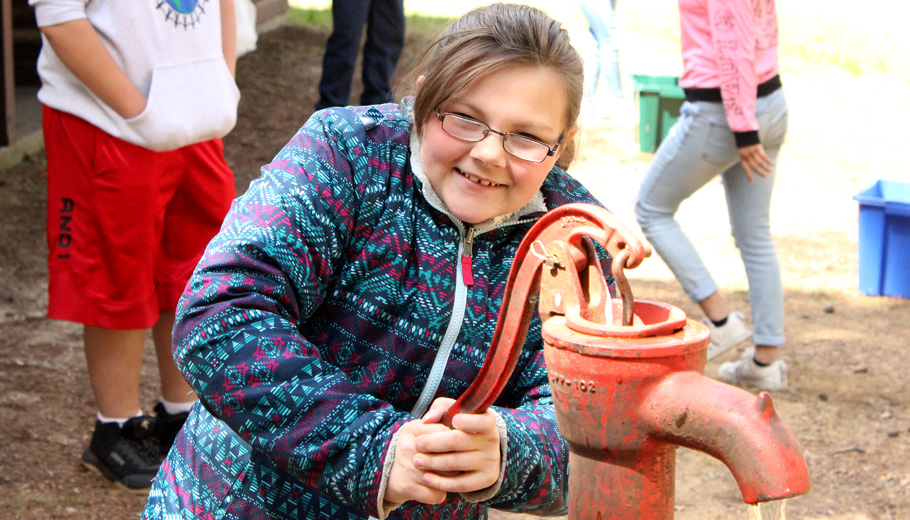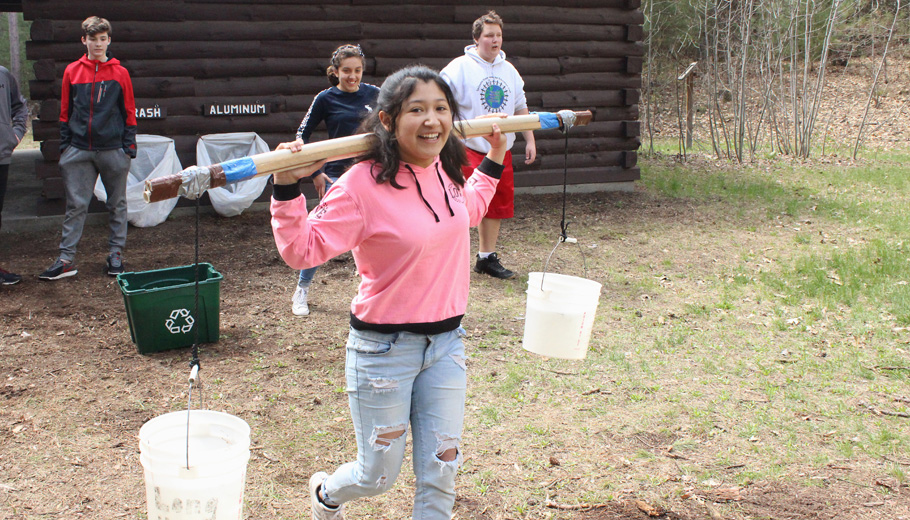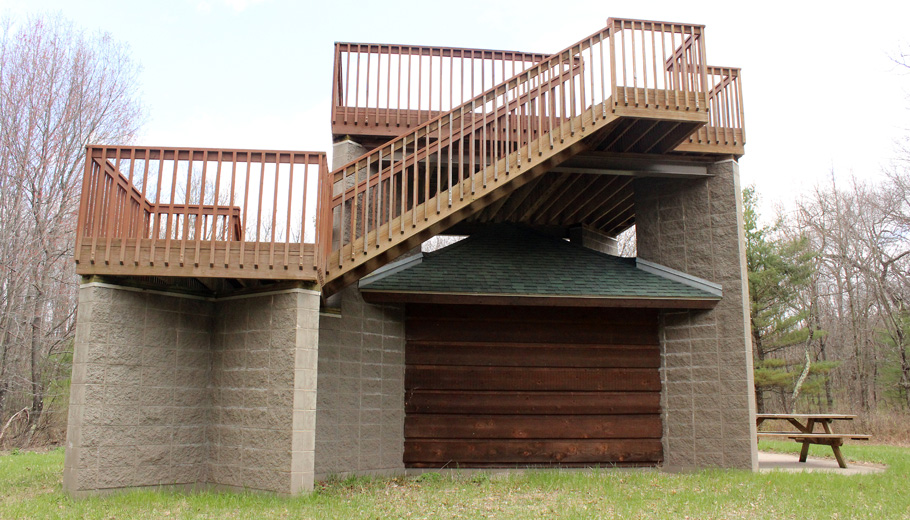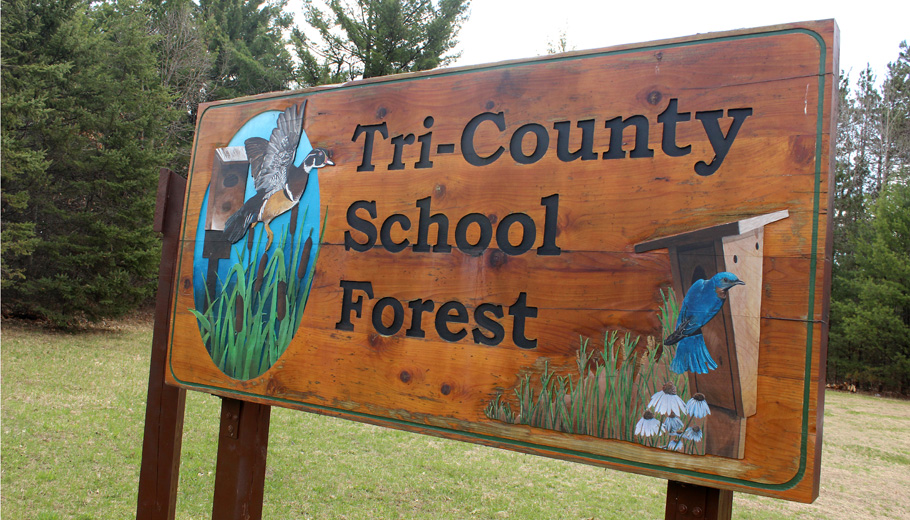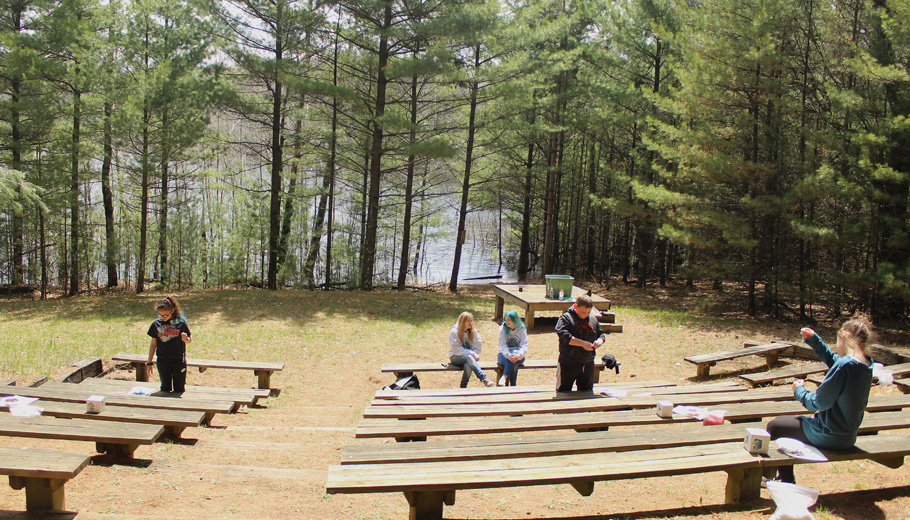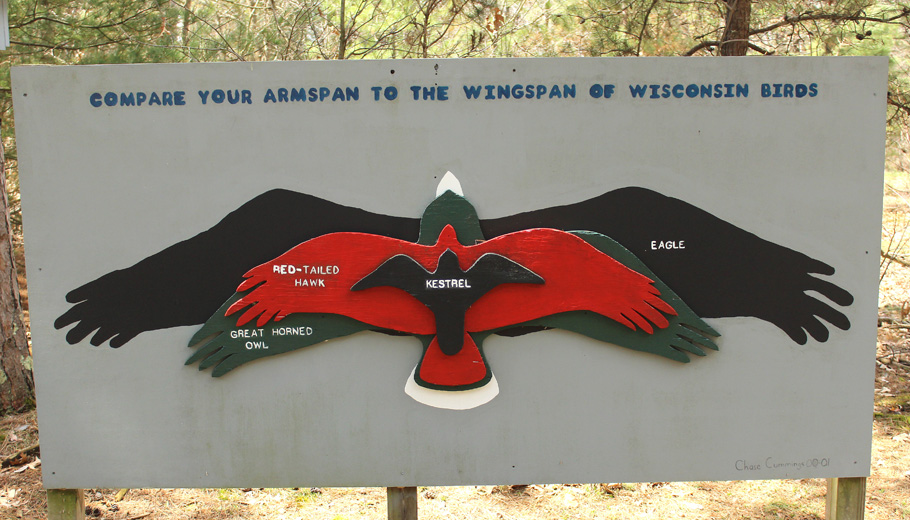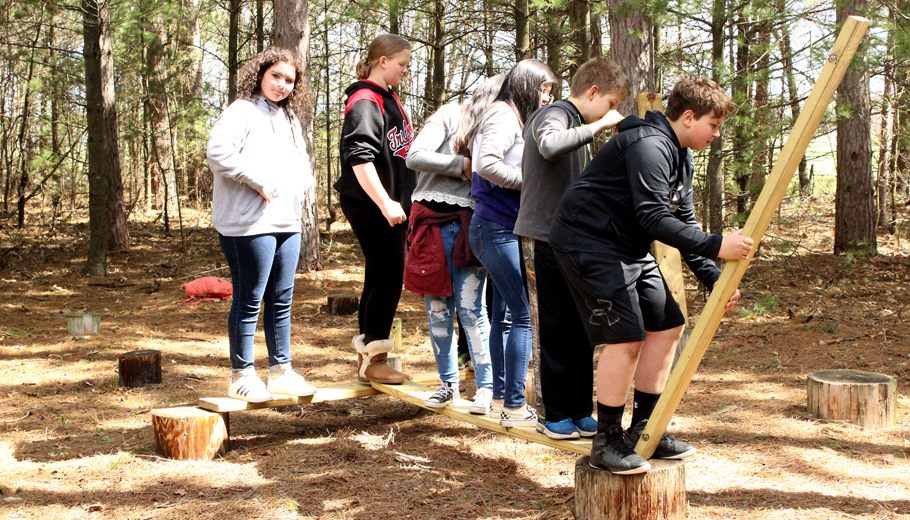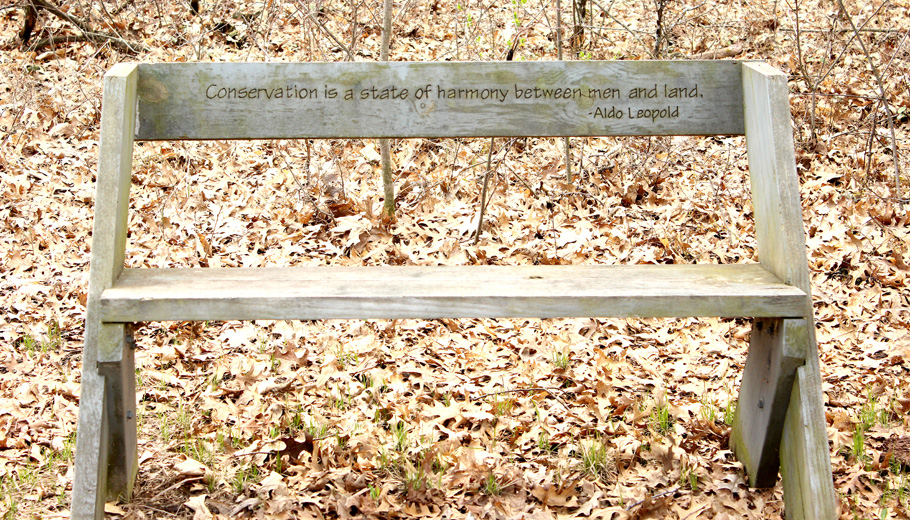Property near Hancock open to the public
By Greg Seubert
For nature lovers, it’s one of Waushara County’s best-kept secrets.
The Tri-County Area School District may be small, but it has something many other larger districts don’t have: its own school forest.
Not only do students make several trips to the property while attending school in Plainfield, it’s also open to the public.
“There’s the physical uniqueness of the property, but it’s probably the ties to school and access to the public,” said Joe Raboin, the district’s environmental education coordinator. “This has led to a lot of careers for kids in different places: DNR jobs, teaching or whatever. It offers a really unique thing for high school kids.”
Raboin has brought hundreds of Tri-County students to the school forest, located six miles south of Plainfield and about two miles north of Hancock off of County Trunk O, including more than 50 sixth-graders in early May.
“This is probably one of the most diverse landscapes of school forests in the state,” he said. “We have pine plantations, regular deciduous forests, wetlands and five ponds. We have a restored prairie, meadows and hay fields.”
The property includes frontage on five small lakes – Bullhead, Reeder, Round, Long and Goose – as well as an observation tower, amphitheater and challenge course.
Variety of ecosystems
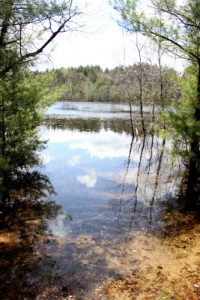
Greg Seubert Photo
Students are exposed to the property’s different ecosystems, according to Raboin.
“It depends on the age,” he said. “For the little kids, just walking on the trails is an activity in itself. In second grade, they make it to the prairie. Today, the sixth-graders are seeing the ponds and wetlands. The high school kids compare the differences between a pine plantation and deciduous forest.
“There’s a progression,” he added. “The kids start off by exploring nature. They do activities of listening, seeing, smelling and touching. Then, they start learning basic concepts like camouflage adaptations. All of those activities are based around games. Then, they get bigger concepts like the water cycle or water conservation. The high schoolers do a lot with Aldo Leopold and land ethics. They take all these things that they learn and hopefully, they become a good steward of the land.”
Tri-County students will make about 20 trips to the property. They take their first trip as 4-year-olds; students in grades K-6 visit in the fall and spring; and high school students visit the property three times.
“They really enjoy it,” Raboin said. “It’s one of their favorite things to do.”
The property includes 240 acres and an 80-acre easement.
“It’s strictly public property, so pretty much anything that’s normal on public land is fine out here,” Raboin said. “People walk their dogs and hike here. Hunting is allowed whenever there’s a season as long as there are no school groups out here. There are no motorized vehicles (allowed), so we don’t have snowmobiles and ATVs.
“It’s pretty popular for hunting depending on the year and the groups that are in the area,” he said. “We have three marked trails that are groomed (for cross-country skiing) and that’s pretty popular. They’re not the greatest ski trails you’ll find, but it’s better than having to drive far.”
Milestones
The property is also marking a pair of milestones this year. Not only is this the 25th year that the district has brought school groups to the school forest, it’s also the 50th anniversary at the present location.
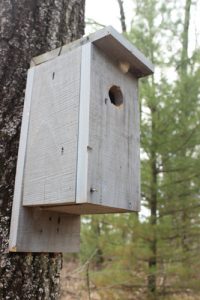
Greg Seubert Photo
The district’s original school forest property was located in the Town of Rome in Adams County, about 13 miles west of Plainfield. A local conservation group, the Land & Lakes Club, had used the land for hunting and donated the land in the early 1950s after learning the district was looking for a parcel of land for developing a school forest.
The club donated the land on two conditions: the land should never be closed to hunting and the forest should serve as a memorial to World War II veterans.
The district utilized the Town of Rome property for about 15 years until Isacson Development Corp. of Reedsburg purchased a large parcel of land next to the school forest. The corporation needed the school forest land to create what is now Lake Camelot; purchased the current school forest land, known as the Powers Property; and transferred it to the district.
“The early years were spent developing things and making things,” Raboin said. “Around the time I started, it kind of transitioned into maintaining things. There’s not too much more that we want out here. We have everything.”
The property pays for itself and the district also gets help from local donors, according to Raboin.
“It’s a decent investment,” he said. “We cut trees and we have a bank account. We don’t spend any district money on the property. It’s all paid for by selling timber. We do get a lot of community support. We’ll get services donated like well drilling or if we need a trench. The ski trails that are groomed, that’s all done for free. We’re six miles from school, so the district does spend some money on busses. I’m a regular teacher and there’s a sub in my room when I’m out here, so there is that investment.
Raboin joined the district as a science teacher 13 years ago and he said he had no idea about the school forest when he looked into the job.
“I didn’t have any idea how fancy this program was,” he said. “I was shocked. Most school forests aren’t developed at all for handing a school group. You have to have a bathroom facility or technically you can’t take a school group. I was fortunate that all of the background was done when I came here. We had a really active bunch of teachers and spouses of teachers that volunteered to make these buildings.”
An advisory committee oversees the property.
“It’s not just one person making all these decisions,” Raboin said. “We have guidelines to follow. One is that any sort of management decisions have to enhance diversity out here as far as wildlife. We couldn’t just clear-cut the whole thing.”
According to the Wisconsin School Forest Program, a partnership between the state Department of Natural Resources’ Division of Forestry and the Wisconsin Center for Environmental Education at the University of Wisconsin-Stevens Point’s College of Natural Resources, 232 of Wisconsin’s 464 public school districts had a registered school forest as of June 2018.
School forests are registered through the state’s community forest program; owned or controlled by a public or private school; and used for environmental education and natural resource management.
“It’s like an outdoor classroom,” Raboin said. “They can learn in the field rather than watching it on a board or on TV.”

